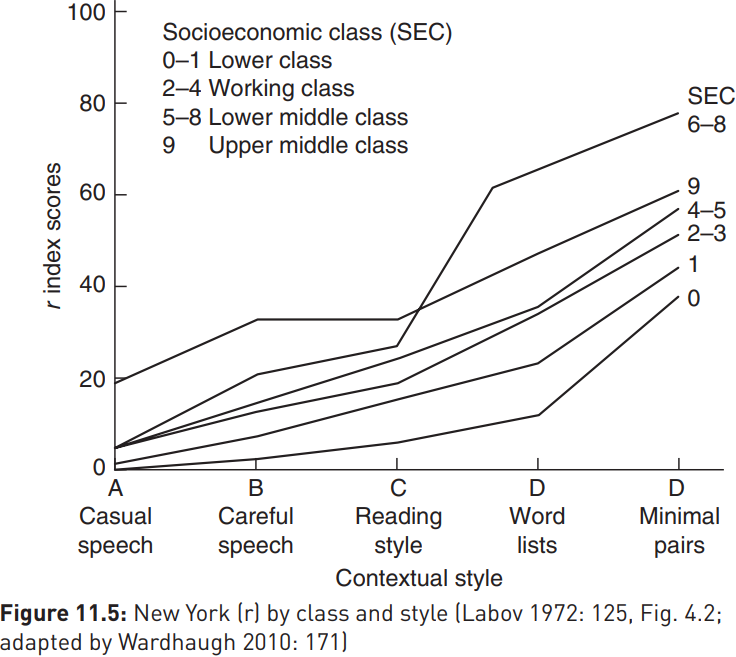


 Grammar
Grammar
 Tenses
Tenses
 Present
Present
 Past
Past
 Future
Future
 Parts Of Speech
Parts Of Speech
 Nouns
Nouns
 Verbs
Verbs
 Adverbs
Adverbs
 Adjectives
Adjectives
 Pronouns
Pronouns
 Pre Position
Pre Position
 Preposition by function
Preposition by function 
 Preposition by construction
Preposition by construction
 Conjunctions
Conjunctions
 Interjections
Interjections
 Grammar Rules
Grammar Rules
 Linguistics
Linguistics
 Semantics
Semantics
 Pragmatics
Pragmatics
 Reading Comprehension
Reading Comprehension|
Read More
Date: 2023-10-09
Date: 2023-11-27
Date: 9-6-2022
|
Martha’s Vineyard
Labov has sometimes been criticized for viewing speakers as ‘sociolinguistic automata’, whose linguistic behavior is entirely moulded by extralinguistic factors such as age, gender and social class. But as an early study from 1963 shows, he has always understood that variation and change could equally be driven by subjective factors.
The island of Martha’s Vineyard lies three miles off the coast of Massachusetts, and had a permanent population of around 6,000 people, swelled by some 42,000 summer visitors who, in Labov’s words, ‘flood the island in June and July every year’. These visitors were, for the most part, rather more prosperous than the islanders themselves, whose traditional industries of fishing and agriculture were in decline. Labov describes the island as a very desirable place to live, but life was nonetheless difficult for Vineyarders: their county, Duke’s, was the poorest in Massachusetts, and a fragile economy, coupled with island isolation, had produced high unemployment and living costs. It is hardly surprising, then, that there was resentment of wealthy ‘summer people’ who were buying up property on the island, and that Vineyarders themselves were torn between remaining on the island and seeking better economic prospects on the mainland.
A feature of Martha’s Vineyard dialect had been the use of centralized diphthongs in the NIGHT and HOUSE lexical sets. The local night  and house
and house  pronunciations appeared to have been losing ground to uncentralized mainland forms (
pronunciations appeared to have been losing ground to uncentralized mainland forms ( and
and  ) for some time. Labov’s investigation of what he called the (ay) and (aw) variables indicated, however, that the Vineyard forms were undergoing something of a resurgence, particularly among the 31–45 age group. The users of the centralized diphthongs were, however, predominantly people favourable to the island and who intended to remain there, in spite of the more limited opportunities it offered. This clear correlation between centralization and pro-Vineyard orientation can be seen in this table:
) for some time. Labov’s investigation of what he called the (ay) and (aw) variables indicated, however, that the Vineyard forms were undergoing something of a resurgence, particularly among the 31–45 age group. The users of the centralized diphthongs were, however, predominantly people favourable to the island and who intended to remain there, in spite of the more limited opportunities it offered. This clear correlation between centralization and pro-Vineyard orientation can be seen in this table:

Variation in this case was based not on class or gender, but on speakers’ attitudes to the place in which they lived and worked. The local centralized forms had become, in McMahon’s (1994: 242) words: ‘the linguistic equivalent of wearing a T-shirt which says “I’m not a tourist, I live here”.’
The variables we have examined so far show patterns of social stratification which align perfectly with the class hierarchy. But variables defying this alignment may be of particular interest. The New York (r) variable, for example, first explored in the department store study, showed an apparently anomalous pattern of stratification in the survey data:

The surprise here is that the social classes just below the top of the hierarchy actually use more of the prestigious (r)-1 variants in formal styles than the classes above them. This unexpected pattern, in which intermediate social classes ‘overreach’ their social superiors, is called hypercorrection in one of its two meanings, and Labov has suggested that it may be indicative of ongoing change from above, i.e. in the direction of an overtly prestigious norm. Such changes, he argues, are most likely to be led not by the highest social class but by the lower middle or upper working classes further down the hierarchy, i.e. precisely those who hypercorrect for the New York (r) variable above. Being acutely aware of their precarious position between the established middle and working classes, these groups are more sensitive to social variation than those in more secure or entrenched class positions. We shall consider an alternative explanation for the role of these apparently pivotal social groups.
|
|
|
|
دراسة تكشف "مفاجأة" غير سارة تتعلق ببدائل السكر
|
|
|
|
|
|
|
أدوات لا تتركها أبدًا في سيارتك خلال الصيف!
|
|
|
|
|
|
|
مجمع العفاف النسوي: مهرجان تيجان العفاف يعزز القيم الأخلاقية والثقافية لدى طالبات الجامعات العراقية
|
|
|